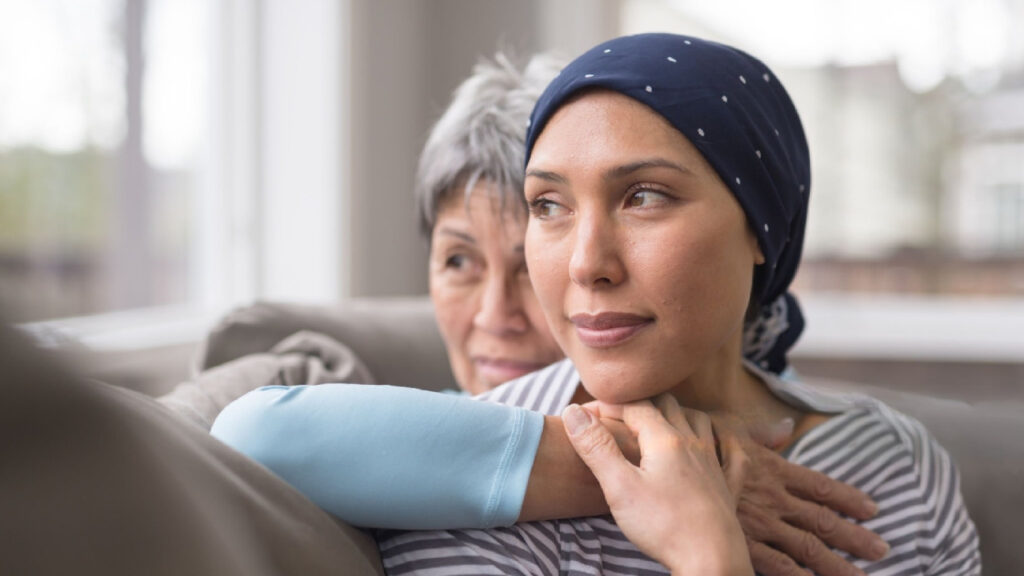Evidence Based
This article relies on solid scientific evidence, authored by experts, and thoroughly fact-checked by specialists.
Our team of licensed nutritionists and dietitians strives to maintain objectivity, impartiality, and honesty. We aim to present a fair representation of both sides of the argument.
Scientific references are included throughout this article. The numbers in parentheses (1, 2, 3) are clickable links to peer-reviewed scientific papers. These sources further support the information provided.

Breast cancer is a topic that has garnered significant attention in recent years due to its widespread impact on women’s health.
As per the World Health Organization (WHO), breast cancer stands as the prevailing form of cancer and remains the primary cause of cancer-related fatalities among women globally (1
World Health Organization
Highly respected international organization
Go to source ).
With extensive research, we have made substantial progress in understanding the risk factors and prevention strategies associated with this devastating disease. While genetic predisposition and lifestyle choices play pivotal roles, there is a dark and often underestimated contributor to breast cancer: smoking.
The risk of cancer can be heightened by smoking, as specific chemicals present in tobacco products can contribute to unregulated cell growth. While smoking is not directly attributed as a cause of breast cancer, there exists a correlation between smoking and an elevated risk in certain individuals (2
American Cancer Society
Highly respected international organization
Go to source ).
In this comprehensive blog, we will delve deep into the intricate relationship between smoking and breast cancer. We will explore the scientific evidence, delve into the effects of smoking on breast health, and discuss strategies for prevention and cessation.
Understanding the Basics
Before we dive into the connection between smoking and breast cancer, it’s essential to have a clear understanding of both components.
Breast Cancer: A Pervasive Threat
Breast cancer is one of the most prevalent cancers among women worldwide. It occurs when cells in the breast tissue mutate and grow uncontrollably. These malignant cells can form tumors and, if not detected and treated early, can spread to other parts of the body, leading to severe health complications and even death.
Smoking: A Global Epidemic
Smoking, on the other hand, is a leading cause of preventable deaths globally. It involves the inhalation of smoke from burning tobacco, which contains a toxic mix of chemicals, including nicotine. Nicotine is highly addictive, making smoking cessation a challenging journey for many individuals.
The Smoking-Breast Cancer Connection
To comprehend the relationship between smoking and breast cancer, we need to examine the extensive body of research that has explored this complex link. Scientists have conducted numerous studies, epidemiological investigations, and clinical trials to shed light on how smoking contributes to the development and progression of breast cancer.
1. Smoking and Breast Cancer Risk
1.1 Epidemiological Evidence
Epidemiological studies have consistently demonstrated a positive association between smoking and breast cancer risk. Here are some key findings:
- Increased Risk: Multiple studies have reported that women who smoke are at a higher risk of developing breast cancer compared to non-smokers.
- Dose-Response Relationship: The risk of breast cancer appears to increase with the duration and intensity of smoking. Heavy smokers are at a greater risk than occasional smokers.
1.2 Biological Mechanisms
To understand why smoking elevates breast cancer risk, researchers have explored the biological mechanisms involved:
- Hormonal Imbalance: Smoking can disrupt the delicate hormonal balance in the body, affecting estrogen levels. Elevated estrogen is a known risk factor for breast cancer.
- DNA Damage: Tobacco smoke contains carcinogens that can damage DNA. This damage can lead to mutations in breast tissue cells, increasing the risk of cancer development.
- Inflammation and Oxidative Stress: Smoking triggers inflammation and oxidative stress in the body, creating an environment conducive to cancer growth.
2. Smoking and Breast Cancer Progression
The harm caused by smoking doesn’t stop at increasing breast cancer risk; it also affects the progression of the disease:
- Aggressive Tumors: Some studies suggest that smokers are more likely to develop aggressive types of breast cancer, which tend to have a poorer prognosis.
- Delayed Diagnosis: Smoking can mask the symptoms of breast cancer, leading to delayed diagnosis and treatment initiation.
3. Secondhand Smoke
It’s not just active smokers who face risks. Secondhand smoke, which is the inhalation of smoke by non-smokers in proximity to active smokers, also poses dangers. Research indicates that exposure to secondhand smoke may modestly increase breast cancer risk in non-smoking women.
Summary
Smoking is consistently linked to an increased risk of breast cancer, with biological mechanisms such as hormonal imbalance and DNA damage contributing to this association, while also impacting the progression of the disease.
The Role of Smoking Cessation
While the link between smoking and breast cancer is concerning, there is a glimmer of hope. Smoking cessation, regardless of age or duration of smoking, can yield significant health benefits. Here’s how quitting smoking can positively impact breast cancer risk:
- Reduced Risk: The risk of breast cancer decreases after quitting smoking. Over time, the risk can approach that of non-smokers.
- Improved Treatment Outcomes: For those already diagnosed with breast cancer, quitting smoking can enhance the effectiveness of cancer treatments and improve overall health.
Empowering Women: Prevention and Education
Given the undeniable connection between smoking and breast cancer, it’s crucial to empower women with knowledge and resources to reduce their risk. Here are some proactive steps that individuals and communities can take:
1. Smoking Cessation Programs
Promoting smoking cessation programs is paramount. These programs offer counseling, support, and sometimes pharmacological interventions to assist smokers in their journey to quit. Communities can play a vital role in making these resources accessible to all.
2. Public Awareness Campaigns
Raising awareness about the link between smoking and breast cancer is essential. Public health campaigns can educate individuals about the risks, motivating them to make informed choices about tobacco use.
3. Supportive Environments
Creating smoke-free environments in public spaces and workplaces helps protect non-smokers from secondhand smoke exposure. These policies are essential in reducing overall tobacco use.
4. Early Detection and Screening
Regular breast self-examinations and mammograms remain crucial for early breast cancer detection. Education about these practices can save lives.
Conclusion: Breaking the Smoking-Breast Cancer Link
In conclusion, the connection between smoking and breast cancer is a sobering reality that demands our attention. While breast cancer is a multifaceted disease influenced by various factors, smoking emerges as a significant, modifiable risk factor. Understanding this link empowers women and healthcare providers to take proactive steps toward prevention and early detection.
It’s vital to remember that quitting smoking, at any stage, can improve breast health and overall well-being. Additionally, public awareness campaigns and support for smoking cessation can contribute to reducing the prevalence of this harmful habit.
As we continue to unravel the complexities of breast cancer and its risk factors, let us be steadfast in our commitment to promoting health, preventing disease, and supporting those on their journey to a smoke-free life. Together, we can break the smoking-breast cancer link and create a healthier future for all women.
How we reviewed this article:
HISTORY
Our experts continually monitor the health and wellness space, and we update our articles when new information becomes available.




